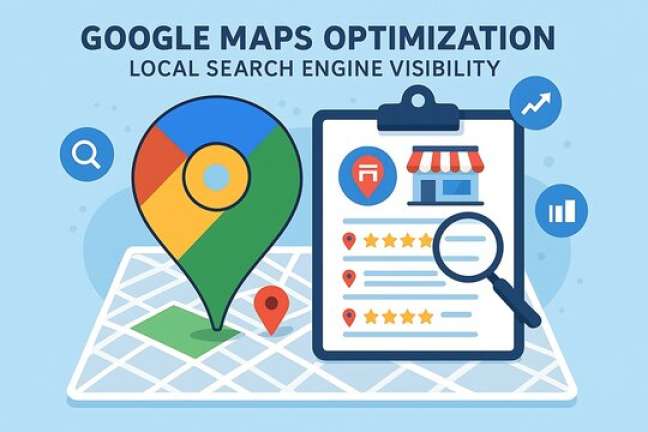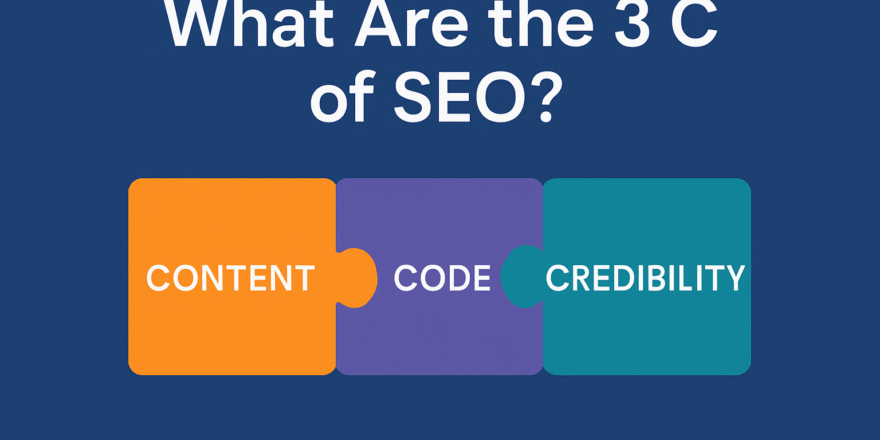The Local Search Revolution: Why Visibility Matters
Being included in local search results is not only advantageous in today’s digital world, but also necessary for business survival. A crazy 97% of people look up and research local businesses online. Additionally, there is a great deal of commercial purpose obvious in mobile device searches, which are frequently location-based. Studies show that 76% of smartphone users visit a business within a day of the search, and 28% of smartphone searches lead to a buy. This shows how important it is to have a good Google Local Optimization plan. To reach customers who are ready to buy, the best thing you can do is learn how to do a local search for any business that has a real location or a service area.
Mastering Your Digital Storefront: Google Business Profile Excellence
A Google Business Profile (GBP) that is well designed is the basis of any Google Local Optimization plan that works. Your free entry, which acts as your shopfront on Google Maps and Search, is a big part of getting the “map pack” that shows up at the top of related searches. To make the most of your resume, you need to carefully fill out every part of it. Being able to pick the most specific and focused major business area is an important part of this process. Include a lot of details, like where you are, how to reach you, your business hours, and a statement that naturally includes relevant local keywords. Regularly posting pictures, updates, and even in-store goods may get more people to interact with your business and show Google that it is current and busy.
Building Trust and Prominence: The Power of Reviews and Citations
In addition to basic information, Google’s local ranking system gives a lot of weight to a company’s image and exposure. Consistent neighbourhood citations and customer reviews are two of the most effective methods to create this authority. A constant flow of lovely reviews serves as a strong recommendation, impacting both your search engine ranking and a potential customer’s choice to pick you over a rival. It is important to actively manage your online image by boosting reviews and carefully answering every comments, both favourable and unfavourable. At the same time, making sure your company’s Name, Address, and Phone number (NAP) are exactly the same in local citations and online directories supports your trustworthiness and aids search engines in properly identifying and showing your company.
Foundations of Online Discovery: Local Keywords and On-Page SEO
Beyond only your GBP (Google Business Profile), a good Google Local Optimization method also goes to your own website. Your website has to be optimised for the real search terms used by your possible clients in order to draw in local organic traffic. Finding terms that link your skills with your location—like “plumber in [City]” or “near me” searches—is the first step in this process. The content of your website, including headers, meta descriptions, and title tags, should then carefully combine these location-based terms. An very successful strategy is to build landing pages especially for each of the main services you provide in each of the locations you serve. This targeted approach improves your chances of ranking for a greater variety of local enquiries by giving a clear signal of importance to both users and search engines.
Expanding Your Digital Footprint: Links and Community Engagement
A company needs to build authority online and look outside its own sites if it wants to really rule local search results. Getting high-quality backlinks from other trustworthy local websites is one of the best ways to show Google how well-known you are. By supporting area events, working with nearby companies on cross-promotion, or showing in local news sites, you may build these beneficial relationships. In addition to raising your image, engaging with your local community online through forums and social media groups may result in organic, credible references. This all-encompassing strategy for Google Local Optimization ensures that you are trusted in addition to being found, building a steady run of local clients for years to come.
Technical Foundations: Site Performance and Structured Data
The technical soundness of your own website is a crucial yet sometimes ignored part of Google Local Optimization. Google gives advantage to websites that provide a quick, safe, and easy-to-use experience. Particularly on mobile devices, where local searches are most popular, page loading time directly affects rating. Just a few seconds of delay may have a big effect on bounce rates and missed sales. Moreover, using schema markup, or local organised data, on your website is an effective technological approach. This code can result in improved rich search results, or “rich snippets,” which increase exposure and click-through rates. It also helps search engines grasp important information about your company, like your name, address, phone number, business hours, and overall review scores.
Leveraging Google’s Ecosystem: Posts, Q&A, and Messaging
Instead of being a static page, an optimised Google Business Profile is a changing tool. Beyond the basics, interest may be greatly raised by aggressively utilising tools like Google Posts. You can share news, events, sales, and new goods right in your Knowledge Panel on Google Maps and Search with these posts. Despite its short lifespan, this information is quite good at showing timeliness and persuading people to visit your store or click through to your website. In a similar way, proactive management of the Q&A area by posting and replying to commonly asked questions anticipates customer enquiries and offers instant benefits. Enabling the chat option allows service-based firms to interact directly and in real time with possible clients, taking advantage of their quick interest.
Hyper-Local Content Marketing for Authority Building
Your website has to place itself as a local authority in order to rule local organic search results. This is achieved by using hyper-local content marketing regularly. Create material that speaks to the unique wants, happenings, and interests of your group rather than making generic blog pieces. This might serve as a guidebook for a real estate agent on “Understanding Property Taxes in [Neighbourhood Name].” One example might be a restaurant’s “The Sourcing of Our Local Ingredients from [Local Farm].” report. This approach focuses on location-specific, long-tail keywords with a high amount of business purpose and less competition. Being a useful local resource signals importance and strong community roots, which boosts audience and search engine trust.
Advanced Link Building through Local Partnerships and PR
Building real, high-quality backlinks is what sets top-ranking local businesses apart, even though local sources are important. Developing link-worthy options in your neighbourhood is a planned strategy. Request a link from the website of a nearby charity event or minor league team to support it. Cross-promote by working on a project or event with like-minded local business. Creating noteworthy information, such a study on regional economic trends or backing a community development project, and sending it to local news groups and writers is another way to do digital public relations. Your domain authority and local search rankings are greatly improved by these well-earned links from trusted local sources.
Measuring, Analyzing, and Refining Your Strategy
Lastly, Google Local Optimization is a constant process that has to be measured and changed. Make use of the Google Business Profile’s integrated insights dashboard to watch how users find your listing—whether via brand, discovery, or direct searches—and the actions they take, like calling, visiting, or getting directions. Use this information in combination with Google Analytics 4 to track user behaviour on your service pages and website traffic from nearby sources. You may determine what is successful, discover areas for growth, and make well-informed choices to continually improve your approach by routinely evaluating this data. This will ensure that your local internet profile gets stronger over time.




